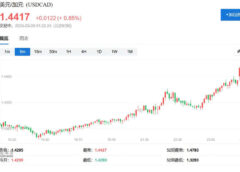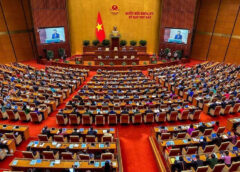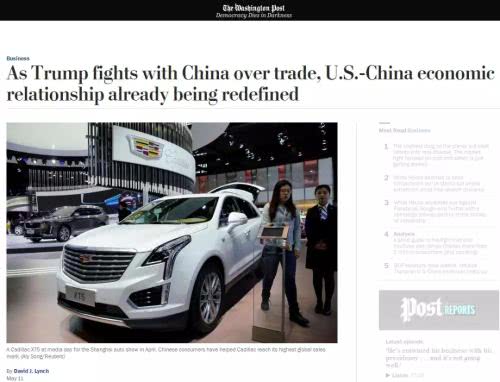
《华盛顿邮报》5月11日刊登金融栏目作者大卫·林奇文章《特朗普跟中国打贸易战之时,中美经济关系已经被重新定义》
文:David J. Lynch
译:李惠妍
去年,中国消费者购买的凯迪拉克汽车数量首次超过美国消费者,提升了通用汽车公司的利润增长。尽管这些豪车的设计环节可能是在美国底特律进行的,但它们基本都是通用汽车在中国靠将近6万名中国工人组装完成的。
越来越多的美国企业在中国制造商品,服务中国消费者。这种越来越显著的动态标志着全球贸易正在发生转型,对特朗普的“美国优先”政策构成了重大巨大挑战。
特朗普所有意图重塑中美经济关系的行动都建立在一个他反复提及的观念之上,即中国靠低薪制造业向美国大批出口商品,损害美国工人的利益。
近来,这场战役翻开了新的一页——特朗普宣称对中美贸易谈判的进度感到不满,再次对中国商品加征关税。
然而,许多经济学家和企业高管表示,无论特朗普能否与中国达成贸易协定,两国的商贸关系已经发生了质的改变。
改革开放四十年后,中国正在从“低薪出口国”这逐渐转变成消费大国,成为汽车、电玩、电脑等越来越多行业的头号消费市场。

中国已是美国豪车凯迪拉克的头号市场
哈佛大学亚洲中心高级研究员欧威廉(William Overholt)表示:“我们正处于生产全球化时代的末期,也是消费全球化的开端。未来的经济重心会从西方婴儿潮一代转向相对更年轻的中国消费者。”
例如,麦肯锡全球研究所的数据显示,十年前,中国制造的商品有71%是在国内市场被消化掉的,如今比例提升到了85%。还要考虑到今天中国经济的规模是十年前的三倍。
经合组织提出,到2020年,中国人均收入将比2010年翻一番。
这样的增长现象也出现在其他快速发展的国家,如印度、印尼等。一系列新赢家和新输家将由此产生。
在美国,消费全球化的主要受益者很可能是投资者和高等技术人才,而不是那些因企业迁向海外而利益受损的蓝领工人。
美国经济和政策研究中心的资深经济学家迪安•贝克说:“这种全球化主要与追逐利润有关,和美国国内就业没什么关系。”
过去,美国人购买了大量中国制造的低成本商品,这对中国工人和节俭的美国人来说都是件好事。但反过来说,当美国企业在中国和其他发展中国家开设工厂,试图迎合中国消费者的时候,美国消费者就不一定笑得出来了。

2018年天猫双十一购物节成交额达2135亿
美国经济分析局的数据显示,目前美国的跨国公司在中国创造就业机会的速度已经超过了美国本土。从2009年至今,美国企业在华员工规模扩大了86%,达到170万人,大约四倍于美国国内招聘速度。
特朗普的贸易政策要让美国经济回到全球化之前的水平。但中国这样的发展势头意味着,哪怕他能和两国能达成良好的协议,美国的政策也难免令人失望。
美国政府官员声称,他们正在努力纠正前几届政府的错误,重新平衡美国与中国及其他国家的贸易关系。例如,新的北美贸易协定要求汽车企业更多地在美国境内完成生产(此协定尚待美国国会通过)。特朗普的关税被认为有助于美国钢铁产业的复苏,也是他任期内制造业新增45.2万个工作岗位的原因之一。
其他趋势也有利于美国。自动化程度的提高及中国等国家工资上涨,使劳动力成本对新工厂选址的重要程度下降。这使得美国成为更具吸引力的投资目的地,尽管自动化程度提高也意味着新工厂不需要那么多美国工人(本世纪初美国工厂关停后,减少了600万个工作岗位。)

随着工厂大批迁出美国,许多教堂、学校、监狱也逐渐废弃
在中美贸易谈判中,美国政府也在寻求更多进入中国市场的机会,或许有助于美国出口。但新的机遇基本无助于弥补过去20年来中美贸易关系深化时期美国蓝领工人的利益损失。
美国谈判代表试图推动中国开放金融服务、保险和云计算等行业。这些行业尽管利润丰厚,但只惠及受过良好教育、掌握高等技能的人才。
在特朗普口中,全球商贸的中心是美国而非其他国家。他宣称其他国家能向美国市场出售商品是一种“特权”。上任第四天,他就决定退出有12国参与的跨太平洋伙伴关系协定。当前,全球需求增长靠发展中国家推动,特朗普的举措使美国企业在亚洲的关键市场处于不利地位。
现在,许多企业高管都不看好美国重新成为全球主导性市场。
美中贸易全国委员会的企业会员包括亚马逊、高盛、宝洁等知名公司,它的主席克雷格•艾伦表示,特朗普政府的立场让跨国公司面临困境。
曾担任美国外交官的艾伦说,“一家公司今天告诉我,他们觉得股东的要求和特朗普政府的要求之间存在矛盾。特朗普政府在建议或强调企业应该在美国境内投资,可美国市场既没有规模,也没有增长潜力。”
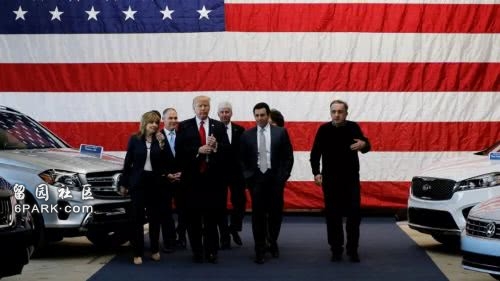
尽管汽车制造商对特朗普做出许诺,但仍然没有显著增加就业
当然,尽管消费在中国经济增长中发挥了重要作用,但中国仍然是世界最大的出口国之一,拥有相当大的商品贸易顺差。因此,奥巴马时期的白宫经济学家布拉德•塞泽尔认为,现在谈论“新时代”还为时过早。
“这是未来全球经济可能的演化路径之一,不一定是当前的轨迹,”他说。
相较于本世纪初的两位数增长速度,中国目前的经济增速有所放缓,部分企业高管对能否深化市场改革表示关切。中国企业债务负担沉重,有经济学家提出了金融危机的警告,这可能推迟经济新时代的到来。
中国人的个人收入仍远低于美国人。采用购买力平价计算(即考虑中美生活成本差异),中国人均收入约为1.6万美元,而美国人均收入约为6万美元。
尽管如此,苹果、沃尔玛和卡特彼勒等众多美国企业仍然特别看重,或者说最看重中国的市场机遇。旧金山铭基国际投资公司的投资策略师安迪•罗斯曼表示,过去十年间,中国人均收入增长了120%,而美国只有15%。
“中国消费者的故事是全世界最精彩的,”罗斯曼说。
更广义地看待中国经济繁荣,它其实是发展中国家转型的一部分,这种转变对跨境商品贸易规模、工业供应链设计以及工厂人机比例都带来了影响。
麦肯锡全球研究所的一项研究显示,以中国为首的发展中国家正快速增长,预计到2030年它们的消费量将占全球总量的51%,两倍于2007年的比例。
美国、欧盟和日本等发达经济体的企业去年向发展中国家的客户出售了价值4.5 万亿美元的商品,包括机械、化工品和汽车。
负责该项研究的麦肯锡合伙人苏珊•伦德表示,“现在设置贸易壁垒,恰好是错误的。”
国际货币基金组织的数据显示,近年来,中国经济增长对全球经济增长的贡献比例超过三分之一,大致相当于美国、欧洲和日本的总贡献量。
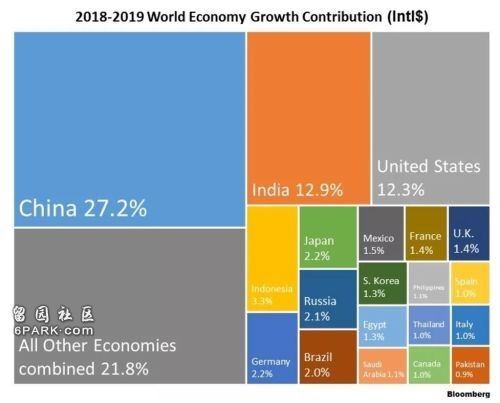
这个趋势具体到通用汽车公司的案例中则表现为,该公司去年向中国买家交付汽车365万辆,而在美国的销售量则不到300万辆。去年,该公司通过在华合资企业获得了20亿美元营收。
通用汽车高级副总裁史蒂夫•卡莱尔在上个月的一次投资者会议上表示:“凯迪拉克去年销售382184辆,创下该品牌116年历史中的最高销量,主要归功于我们在中国市场的强劲业绩。”
美国跨国公司在海外业务蓬勃发展,通常也会为其本土总部、研究实验室和设计工作室增添就业岗位。像凯迪拉克这样的成功业务部门创造的利润大大有利于企业整体盈利,并通过创新为美国人带来了就业机会。但这些收益更多地流向了投资者和受过良好教育的工人。
美国国际金融研究所副首席经济学家塞尔吉•拉瑙表示:“中国消费者购买更多的凯迪拉克,为公司股东和高技能员工带来了更多的好处。未来美国的利益分配不均现象将更加突出。”
As Trump fights with China over trade,U.S.-China economic relationship already being redefined
Chinese consumers for the first time last year bought more Cadillacs than Americans did, helping drive profits at General Motors. And though the designs for those Cadillacs may have been drafted in Detroit, nearly all of the luxury automobiles were assembled in China by some of GM’s nearly 60,000 local workers.
This growing dynamic — of American companies serving Chinese consumers with products made in China — marks a shift in global trade that could pose a significant challenge to President Trump’s“America First” agenda.
Trump has based his campaign to refashion economic relations with China on the well-established notion that the country undercut American workers through low-wage manufacturing of goods exported tothe United States.
That campaign entered a new chapter thisweek when Trump once again hiked tariffs on Chinese goods after declaring himself dissatisfied with the pace of negotiations on a new trade agreement.
But whether he succeeds in securing a trade deal, many economists and executives say, the nature of the business relationship between the United States and China already is being redefined.
After four decades of economic reform, China is morphing from a low-wage exporter into the largest consumer market fora growing number of industries, including automobiles, video games and computers.
“We’re at the end of a period of the globalization of production,”said William Overholt, a senior fellow at Harvard University’s Asia Center.“We’re at the beginning of a period of globalization of consumption in which the center of gravity moves from baby boomers in the west to the relatively young Chinese.”
A decade ago, for instance, Chinese consumers bought 71 percent of the products manufactured in China, according to the McKinsey Global Institute. Today, the Chinese buy 85 percent of what they produce — and their economy is three times larger.
By next year, China’s per-person income will have doubled since 2010, according to the Organization for Economic Cooperation and Development.
The phenomenon, which is also seen in other quickly developing countries like India and Indonesia, will create a new set of winners and losers.
In the United States, the principal beneficiaries of the era of globalized consumption are likely to be investors and highly skilled employees, rather than the blue-collar workers who suffered as companies moved overseas.
“It’s definitely a profits story,” said Dean Baker, senior economist at the Center for Economic and Policy Research. “It’ll have very little to do with any jobs here.”
In the past, Americans bought up the low-cost goods made in China, which was a boon for Chinese workers and also for cost-conscious Americans. But, in seeking to cater to the Chinese consumer, the reverse is not true. American companies instead are setting up factories there and in other developing markets.
Already, United States -based multinationals have been creating jobs faster in China than at home, according to the Bureau of Economic Analysis. Since 2009, corporations have increased their Chinese workforce by 86 percent to 1.7 million — roughly four times the rate of increase at home.
For Trump, that means a trade policy that often seems to promise a return to an earlier era before globalization could disappoint, even if he secures a good deal with the Chinese.
Administration officials say they are making headway rebalancing trade relations with China and other countries to rectify mistakes made by Trump’s predecessors. A new North American trade deal, for example, requires more auto manufacturing to be done in the United States. (It still needs to be passed by Congress.) The president’s tariffs are credited with reviving steel production, one factor in the addition of 452,000 new manufacturing jobs during his tenure.
Other trends also could benefit the United States. Rising wages in countries such as China and increasing automation are making labor costs relatively less important in determining the location of new factories. That makes the U.S. more attractive as an investment destination, though rising automation means new plants require fewer American workers than the factories that closed earlier this century, vaporizing 6 million jobs.
In trade talks with Beijing, the administration also is seeking greater access to the Chinese market, which could aid U.S. export prospects. But the biggest new opportunities may do little for blue-collar workers who lost out over the past 20 years of growing U.S.-China trade ties.
U.S. negotiators are pushing the Chinese to open their markets for industries such as financial services, insurance and cloud computing. These are profitable endeavors, but ones that favor the well-educated and skilled.
The president has often portrayed a narrative of global commerce that puts the United States — not foreign markets— at the center. He calls it a “privilege” for other countries to sell into the U.S. market. And his decision to quit a 12-nation Pacific trade deal, known as the Trans-Pacific Partnership, on his fourth day in office left American companies at a disadvantage in key Asian markets at a time when developing countries are driving the growth in global demand.
Now, many executives say they do not expect the United States to reclaim its role as the globe’s dominant market.
Craig Allen, president of the U.S.-China Business Council, which represents companies such as Amazon, Goldman Sachs and Procter & Gamble, said the administration’s stance presents multinationals with a dilemma.
“A company told me today they feel some tension between what their shareholders are telling them and what the Trump administration is telling them,” said Allen, a former U.S. diplomat. “The administration is suggesting or emphasizing investment in the U.S. That’s not where the market is; that’s not where the market growth is.”
To be sure, despite consumption’s blossoming role in China’s growth, the country remains one of the world’s top exporters and enjoys a sizable merchandise trade surplus. Brad Setser, a former White House economist in the Obama administration, said talk of a new era is premature.
“This is one possible future evolution of the global economy. It isn’t necessarily the trajectory we’re already on,” he said.
The Chinese economy also has slowed from its double-digit growth pace of earlier this decade, and many business executives doubt President Xi Jinping’s commitment to further market-oriented reforms. China faces a daunting corporate debt burden that some economists warn could spark a financial crisis and delay the onset of a new economic era.
The typical Chinese individual also still earns much less than an American. In terms of purchasing power parity, which takes account of each country’s living costs, Chinese per-capita income is about $16,000, compared with roughly $60,000 in the United States.
Still, China has firmly established itself as a top opportunity — if not the top opportunity — for a wide range ofAmerican companies, including Apple, Walmart and Caterpillar. Over the past decade, per-person income in China has grown by 120 percent, compared with just 15 percent in the United States , according to Andy Rothman, an investment strategist with Matthews Asia in San Francisco.
“This is the world’s best consumer story,” Rothman said.
China’s growing prosperity is part of a broader transformation of developing countries that is affecting the volume of goods traded across borders, the design of industry supply chains and the mix between factory labor and robots.
By 2030, fast-growing developing countries led by China are expected to account for 51 percent of global consumption, nearly double their 2007 share, according to a study by McKinsey Global Institute.
Companies in the advanced economies, including the United States , the European Union and Japan, last year sold $4.5 trillion worth of goods, including machinery, chemicals and cars, to customersin poorer nations.
“This is exactly the wrong time to be putting up barriers to trade,”said Susan Lund, a McKinsey partner who directed the study.
In recent years, China accounted for more than one-third of global economic growth — roughly equal to the combined contributions of the United States, Europe and Japan, according to the International Monetary Fund.
For General Motors, that translated into deliveries of 3.65 million vehicles last year to Chinese buyers, compared with fewer than 3 million to Americans. The automaker earned $2 billion last year from its joint ventures in China.
“We posted the highest global sales mark in Cadillac’s 116-year history of 382,184 units, primarily on the strength of our performance inChina,” Steve Carlisle, senior vice president of General Motors, told an investor conference last month.
U.S. multinationals that prosper overseas typically add jobs back home at their headquarters, research labs and design studios. Successful ventures like Cadillac’s generate profits that flow to the corporate bottom line, generating job-creating innovations for Americans.
But those gains tilt toward investors and better-educated workers.
“The benefit of Chinese consumers buying more Cadillacs accrue more to shareholders and very high-skilled people. You’ll see more of an unbalanced distribution of benefits,” said Sergi Lanau, deputy chief economist for the Institute of International Finance.
(End)
